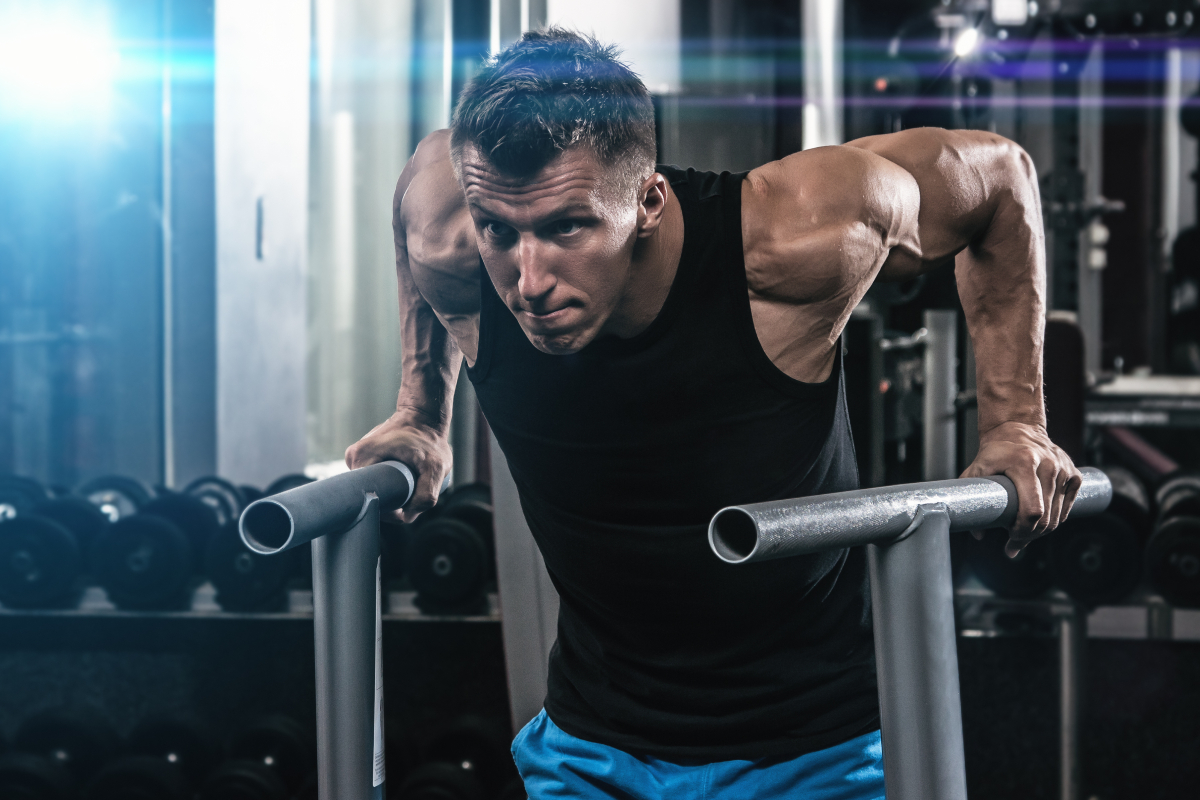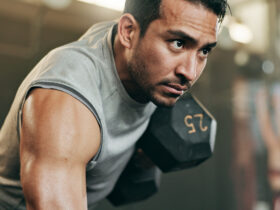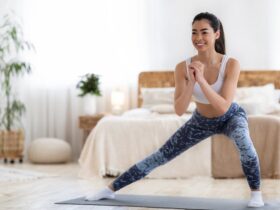Dips are an essential strength training exercise often featured in muscle building and conditioning workout routines.
In order to fully understand how effective dips can be, it is essential to know which muscles are being targeted throughout this popular upper body movement.
Pectoralis Major: The Primary Chest Muscle
The pectoralis major is a large fan-shaped muscle located across the chest that covers your rib cage.
Its primary functions include drawing the arm forward and downward as well as turning it inward or rotating it toward your body.
When performing dips, you heavily engage the pectoralis major as you push your body upward, working against gravity and resistance to strengthen your chest muscles.
Selecting Dip Variations for Chest Focus
There are certain variations of dips that specifically target the pectoralis major more effectively than others.
By adjusting your grip width, hand position, and body angle, you can enhance muscle activation and elicit better chest-building results.
- Wide Grip Dips: Positioning your hands farther apart can place greater focus on the chest muscles during dips, targeting the pectoralis major more intensely.
- Lean Forward Dips: Leaning your torso slightly forward engages the lower portion of the pectoralis major while reducing the involvement of other muscles such as the triceps and deltoids.
Anterior Deltoid: Shoulder Strength and Stability
The second muscle group primarily targeted during dips is the anterior deltoid, or the front part of your shoulder.
These muscles work in conjunction with your pectorals and play a crucial role in stabilizing your shoulder joint during the exercise.
Responsible for various movements such as horizontal adduction, they are key in common pushing movements.
Emphasizing Shoulder Activation with Dip Adjustments
To maximize the benefits of dips for anterior deltoid development, certain modifications can be made to tailor the exercise specifically for this muscle group.
- Narrow Grip Dips: A closer hand placement can increase the engagement of the anterior deltoid while reducing chest muscle activation.
- Upright Body Position: Keep your body upright and avoid leaning forward to create higher demand on the anterior deltoids when performing dips.
Triceps Brachii: Extending Your Arm Strength
The final major muscle group engaged during dips is the triceps brachii, located at the back of your upper arm.
Known for its role in extending your arm at the elbow joint, the triceps are an important player in many upper body exercises, including push-ups, bench presses, and dips themselves.
Tricep dips significantly contribute to building impressive arm strength and definition.
Focusing on Tricep Engagement in Dips
For individuals prioritizing tricep development through dips, there are several variations that can better isolate and target these muscles.
- Bench Dips: With your hands positioned behind you on a bench and feet extended forward, lower your body into a dip, keeping your elbows parallel and focusing on the extension of your arms to emphasize tricep activation.
- Parallel Bar Dips: Using parallel bars or a dip station, align your palms facing inward and keep your body upright throughout the dip. This positioning minimizes chest involvement and places greater demand on the triceps to complete the movement.
Secondary Muscle Groups Engaged in Dips
While dips primarily target the pectoralis major, anterior deltoid, and triceps brachii, several secondary muscle groups are also activated during the exercise, contributing to overall stabilization and movement support.
- Rhomboids: Located between your shoulder blades, the rhomboids function as spinal stabilizers during the dip movement.
- Serratus Anterior: These muscles assist with shoulder blade stabilization necessary for maintaining proper form and stability while dipping.
- Latissimus Dorsi (Lats): The large muscles located along your sides also provide support and control over the movement during dips to help prevent injury caused by sudden jerky movements.







